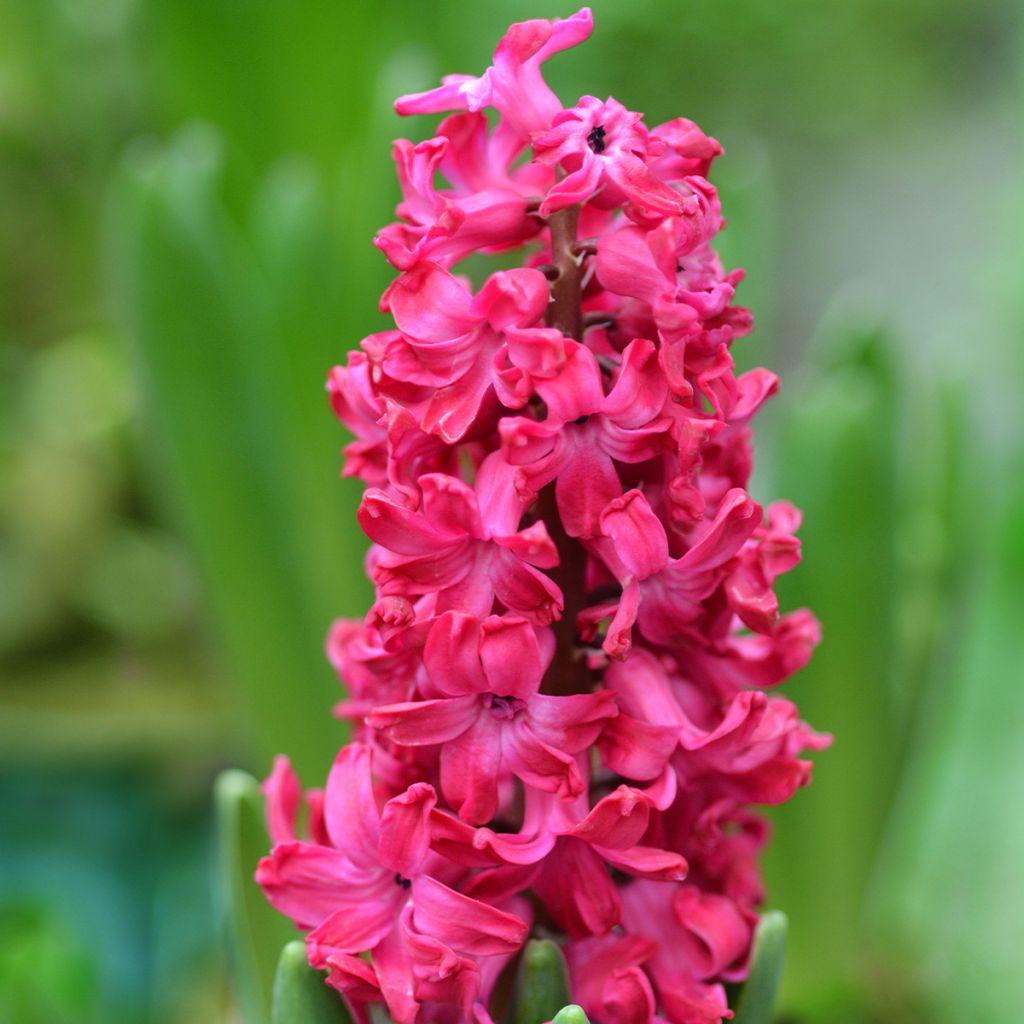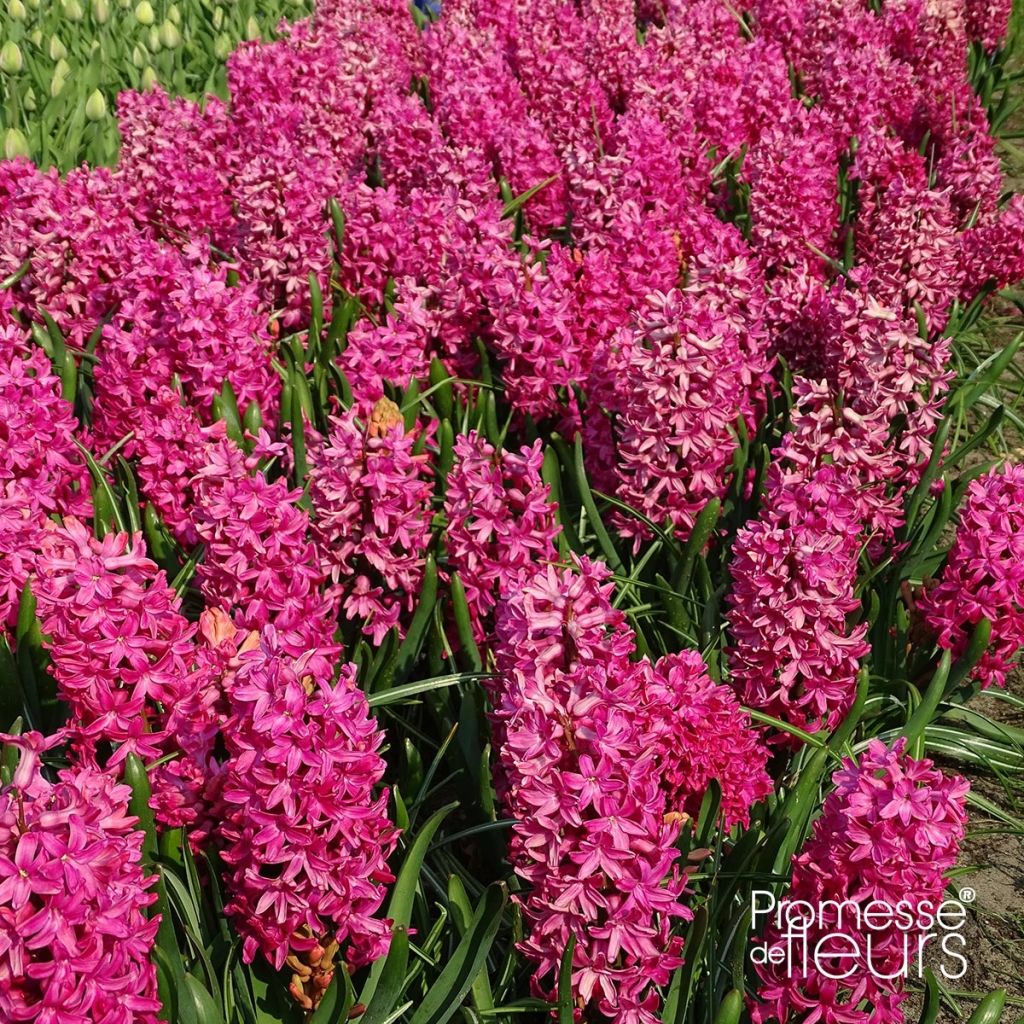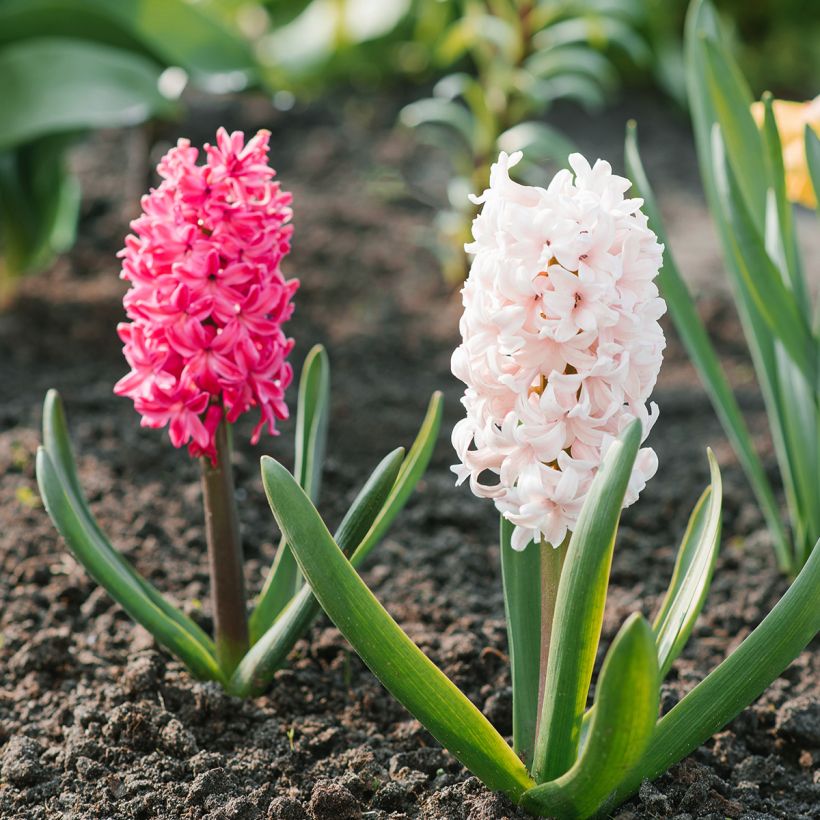Shipping country and language
Your country of residence may be:
Your country of residence is:
For a better user experience on our website, you can select:
Your shipping country:
-
Andorra
-
Austria
-
Belgium
-
Bulgaria
-
Canada
-
Chile
-
Croatia
-
Cyprus
-
Czechia
-
Denmark
-
Estonia
-
Finland
-
France
-
Germany
-
Greece
-
Hungary
-
Iceland
-
Ireland
-
Italy
-
Latvia
-
Lithuania
-
Luxembourg
-
Malta
-
Monaco
-
Netherlands
-
Poland
-
Portugal
-
Romania
-
Slovakia
-
Slovenia
-
Spain
-
Sweden
-
Switzerland
-
United Kingdom
We only deliver seed and bulb products to your country. If you add other products to your basket, they cannot be shipped.
Language:
-
French
-
German
-
Spanish
-
English
-
Italian
My Account
Hello
My wish lists
Log in / Register
Existing customer?
New customer?
Create an account to track your orders, access our customer service and, if you wish, make the most of our upcoming offers.


Hyacinthus x orientalis Jan Bos


Hyacinthus x orientalis Jan Bos


Hyacinthus x orientalis Jan Bos


Hyacinthus x orientalis Jan Bos


Hyacinthus x orientalis Jan Bos


Hyacinthus x orientalis Jan Bos
Hyacinthus x orientalis Jan Bos
Hyacinthus x orientalis Jan Bos
Common Hyacinth, Garden Hyacinth
Beautiful, healthy bulbs with large sizes. You will have to wait until spring 2022 to experience their delightful fragrance. They should be planted along the pathway for both their scent and visual appeal." Analyse de la traduction : - "Beaux bulbes bien sains et de gros calibres" a été traduit par "Beautiful, healthy bulbs with large sizes". La traduction rend compte du sens du texte original en utilisant des termes anglais appropriés. - "Il faut attendre le printemps 2022 pour sentir son délicieux parfum" a été traduit par "You will have to wait until spring 2022 to experience their delightful fragrance". La traduction conserve le sens du texte original et utilise une tournure idiomatique en anglais britannique. - "Plantés en bordure d'allée pour l'odeur et le visuel" a été traduit par "They should be planted along the pathway for both their scent and visual appeal". La traduction rend compte du sens du texte original en utilisant des termes anglais appropriés. La traduction ne comporte aucune faute potentielle et conserve le ton du texte original.
Béatrice, 22/10/2021
Order in the next for dispatch today!
Dispatch by letter from €3.90.
Delivery charge from €5.90 Oversize package delivery charge from €6.90.
More information
This item is not available in your country.
Schedule delivery date,
and select date in basket
This plant carries a 6 months recovery warranty
More information
We guarantee the quality of our plants for a full growing cycle, and will replace at our expense any plant that fails to recover under normal climatic and planting conditions.
From €5.90 for pickup delivery and €6.90 for home delivery
Express home delivery from €8.90.

Does this plant fit my garden?
Set up your Plantfit profile →
Description
The Hyacinthus orientalis 'Jan Bos' is one of the many hybrids resulting from the oriental hyacinth that blooms in the garden a week before the others. This old variety, obtained in 1910, has brought joy to many generations of gardeners with its beautiful flowering spikes, strongly built, highly fragrant, with colours ranging from raspberry red to carmine pink of unmatched vibrancy. Particularly easy to force for winter flowering at home, this hyacinth is a bulbous plant that also grows very easily in the garden, in fertile and moist, but well-drained soil.
The Oriental Hyacinth, the natural species that has given rise to countless cultivars highly appreciated by gardeners, is almost no longer cultivated. This botanical species can be found naturalised in France in Bouches-du-Rhône, Var, Alpes-Maritimes and Lot-et-Garonne.
The 'Jan Bos' hyacinth, just like it, belongs to the hyacinth family, or asparagus family. It has a large oval bulb and forms a clump of bright green ribbon-like leaves from spring onwards, from which a robust flowering stem, 20 to 30 cm (8 to 12in) long, emerges in March-April, bearing numerous star-shaped flowers, with a thick and waxy substance, of intense red-pink colour, and with a powerful scent. The foliage is deciduous in summer; it reappears at the end of winter.
Among early flowering plants, the hyacinth is one of the few bulbs with large flowers. Reserve a prominent place for it in the garden, not far from the entrance to the house to enjoy its fragrance with every passing. It will bring spectacular spots of colour to your flower beds. Hyacinths can easily be combined with other early bulbs such as Chionodoxas or early Tulips. Their flowers are edible, raw or cooked, and reveal a slightly mucilaginous texture. They can be candied with sugar or added to fruit salads. The 'Jan Bos' hyacinth is particularly enhanced when associated with white tulips.
Report an error about the product description
Hyacinthus x orientalis Jan Bos in pictures




Plant habit
Flowering
Foliage
Botanical data
Hyacinthus
x orientalis
Jan Bos
Hyacinthaceae
Common Hyacinth, Garden Hyacinth
Cultivar or hybrid
Planting and care
Plant the 'Jan Bos' hyacinth in October-November by burying the bulbs 8 to 10 cm (3 to 4in) deep and 15 to 20 cm (6 to 8in) apart. The soil should be deep, fertile, slightly acidic, neutral, or slightly alkaline, but well-drained. This plant appreciates well-decomposed fertilizers and light, dry soils in summer. It fears waterlogged soils in winter. In very harsh climates, cover with mulch to protect from extreme cold. The flowering takes place from February to April-May, depending on the varieties. After flowering, wait for the yellowing and wilting of the leaves to dig up the bulbs, which will be stored in a dry place until they are replanted in the following autumn. Hyacinths can survive in the ground during winter if the temperature does not drop below -15°C (5°F) and the soil is permeable. The second-year flowering will generally be less beautiful than the first, but still very acceptable for bed decoration. Pot cultivation is possible, following the same cultivation method, ensuring that the plant does not lack water during the growing season.
Planting period
Intended location
Care
-
, onOrder confirmed
Reply from on Promesse de fleurs
Haven't found what you were looking for?
Hardiness is the lowest winter temperature a plant can endure without suffering serious damage or even dying. However, hardiness is affected by location (a sheltered area, such as a patio), protection (winter cover) and soil type (hardiness is improved by well-drained soil).

Photo Sharing Terms & Conditions
In order to encourage gardeners to interact and share their experiences, Promesse de fleurs offers various media enabling content to be uploaded onto its Site - in particular via the ‘Photo sharing’ module.
The User agrees to refrain from:
- Posting any content that is illegal, prejudicial, insulting, racist, inciteful to hatred, revisionist, contrary to public decency, that infringes on privacy or on the privacy rights of third parties, in particular the publicity rights of persons and goods, intellectual property rights, or the right to privacy.
- Submitting content on behalf of a third party;
- Impersonate the identity of a third party and/or publish any personal information about a third party;
In general, the User undertakes to refrain from any unethical behaviour.
All Content (in particular text, comments, files, images, photos, videos, creative works, etc.), which may be subject to property or intellectual property rights, image or other private rights, shall remain the property of the User, subject to the limited rights granted by the terms of the licence granted by Promesse de fleurs as stated below. Users are at liberty to publish or not to publish such Content on the Site, notably via the ‘Photo Sharing’ facility, and accept that this Content shall be made public and freely accessible, notably on the Internet.
Users further acknowledge, undertake to have ,and guarantee that they hold all necessary rights and permissions to publish such material on the Site, in particular with regard to the legislation in force pertaining to any privacy, property, intellectual property, image, or contractual rights, or rights of any other nature. By publishing such Content on the Site, Users acknowledge accepting full liability as publishers of the Content within the meaning of the law, and grant Promesse de fleurs, free of charge, an inclusive, worldwide licence for the said Content for the entire duration of its publication, including all reproduction, representation, up/downloading, displaying, performing, transmission, and storage rights.
Users also grant permission for their name to be linked to the Content and accept that this link may not always be made available.
By engaging in posting material, Users consent to their Content becoming automatically accessible on the Internet, in particular on other sites and/or blogs and/or web pages of the Promesse de fleurs site, including in particular social pages and the Promesse de fleurs catalogue.
Users may secure the removal of entrusted content free of charge by issuing a simple request via our contact form.
The flowering period indicated on our website applies to countries and regions located in USDA zone 8 (France, the United Kingdom, Ireland, the Netherlands, etc.)
It will vary according to where you live:
- In zones 9 to 10 (Italy, Spain, Greece, etc.), flowering will occur about 2 to 4 weeks earlier.
- In zones 6 to 7 (Germany, Poland, Slovenia, and lower mountainous regions), flowering will be delayed by 2 to 3 weeks.
- In zone 5 (Central Europe, Scandinavia), blooming will be delayed by 3 to 5 weeks.
In temperate climates, pruning of spring-flowering shrubs (forsythia, spireas, etc.) should be done just after flowering.
Pruning of summer-flowering shrubs (Indian Lilac, Perovskia, etc.) can be done in winter or spring.
In cold regions as well as with frost-sensitive plants, avoid pruning too early when severe frosts may still occur.
The planting period indicated on our website applies to countries and regions located in USDA zone 8 (France, United Kingdom, Ireland, Netherlands).
It will vary according to where you live:
- In Mediterranean zones (Marseille, Madrid, Milan, etc.), autumn and winter are the best planting periods.
- In continental zones (Strasbourg, Munich, Vienna, etc.), delay planting by 2 to 3 weeks in spring and bring it forward by 2 to 4 weeks in autumn.
- In mountainous regions (the Alps, Pyrenees, Carpathians, etc.), it is best to plant in late spring (May-June) or late summer (August-September).
The harvesting period indicated on our website applies to countries and regions in USDA zone 8 (France, England, Ireland, the Netherlands).
In colder areas (Scandinavia, Poland, Austria...) fruit and vegetable harvests are likely to be delayed by 3-4 weeks.
In warmer areas (Italy, Spain, Greece, etc.), harvesting will probably take place earlier, depending on weather conditions.
The sowing periods indicated on our website apply to countries and regions within USDA Zone 8 (France, UK, Ireland, Netherlands).
In colder areas (Scandinavia, Poland, Austria...), delay any outdoor sowing by 3-4 weeks, or sow under glass.
In warmer climes (Italy, Spain, Greece, etc.), bring outdoor sowing forward by a few weeks.